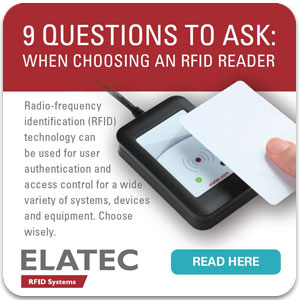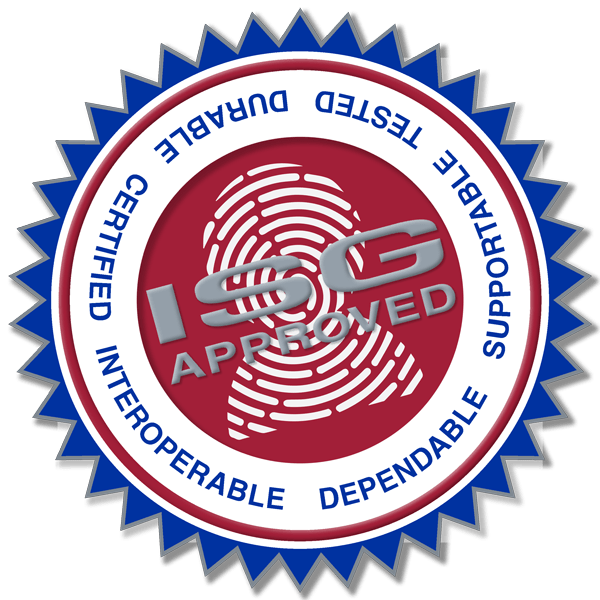Re-posted with permission from Elatec and edited.
Setting up the ideal physical access control (PAC) solution involves many decisions: selecting the appropriate access technology, determining the scope of applications that will be covered, and addressing user requirements and security concerns. Here are ten things to consider when designing a PAC system for your organization.
1. Scope & Applications
The first step in designing a PAC solution is defining the scope of locations, systems and applications that will be covered. That may include exterior and interior doors, gates and turnstiles, cabinets and lockers, and physical assets such as production machinery, vending machines, medical or laboratory devices, and more. It may also be desirable to unify physical and logical access with a system that also covers computers, printers and login to business systems and applications.
2. Access Technology
Physical access no longer means just mechanical keys. Modern PAC systems typically rely on technologies such as Radio-Frequency Identification (RFID) or smartphone-based access credentials using Near-Field Communication (NFC) or Bluetooth® Low Energy (BLE). Consider whether physical ID cards or mobile credentials work best for the intended user base. A universal reader can easily accommodate both.
3. Transponder Technology
Within the world of RFID, there are dozens of high-frequency (HF) and low-frequency (LF) transponder technologies in addition to smartphone-based NFC or BLE credentials. In general, HF RFID and NFC are more secure than LF RFID or BLE solutions. In a multi-tenant building or large organization, it may be necessary or desirable to accommodate multiple transponder technologies at the same time. This can be accomplished with a universal reader.
4. User Groups & Access Levels
Make sure access levels can be easily set for different user groups or individuals and that access can be easily changed or revoked as needed. Consider what types of access different user groups need and at what times. RFID readers can connect with a centralized access management system to simplify user management and enable tracking of who has entered a location or used an asset.
5. Digital Security
Make sure the system meets modern security standards. Choose a transponder technology that supports strong encryption standards (e.g., AES, 3DES, ECC) to protect data stored on the card and during communication between the card and reader. For high-security PAC applications, it may be desirable to incorporate secure multifactor authentication (MFA) into the solution (for example, an access PIN entered on an integrated keypad or biometric authentication built into the smartphone).
6. Physical Security
For PAC, it is also important to secure the reader itself to prevent tampering or disabling. Ensure that readers are securely mounted and in a tamper-proof housing, especially for external PAC applications. Outdoor readers should be weather-resistant and capable of withstanding rain, snow, dust and extreme temperatures.
7. System Integration & Interoperability
Make sure the PAC system is compatible with current infrastructure, including IT networks, video surveillance, alarm systems and building management systems. Use industry standards and protocols (e.g., OSDP, Wiegand) to facilitate seamless integration and interoperability between different systems. Also, look for software development kits and APIs that support custom integrations and extensions.
8. Reader Functionality & Customization
Some PAC applications may require specialized reader functionality, such as user feedback (e.g., lights or sounds) or other reader behaviors that enhance security or user convenience. Choose a reader that supports the capabilities needed. It should have a robust software development kit that enables customization.
9. Updates & Future-Proofing
Reader firmware will need to be updated periodically, for example, to address emerging security threats, add new transponder technologies or modify functionality as the PAC system evolves. Remote update capabilities make this process much faster and easier, reducing downtime and ensuring that the system remains secure and up-to-date with the latest advancements in access control technology.
10. Service & Support
Effective implementation and maintenance of a PAC system require robust support services from the provider. Ensure your chosen PAC vendor offers comprehensive support, including access to a dedicated technical support team, detailed installation guides, and help with system integration. Regular firmware and software updates are crucial to address security vulnerabilities and add new features. Additionally, look for available training programs for installers and integrators, as well as warranty and repair services to maintain system reliability.
Physical Access Solutions from the ISG
Universal, multi-technology readers from ISG partners like ELATEC make setting up the ideal PAC system easy. Available in a range of form factors for integration in various applications, these readers can support virtually any transponder technology in addition to mobile credentials using NFC or BLE.
ELATEC’s highly robust DevKit enables fast configuration and customization of transponder technologies, encryption and reader functionality. With remote update capabilities, future-proofing your PAC system and responding to evolving requirements is easy. And everything is backed by the ISG’s nationwide network of unbeatable local service and support.
Talk to your local ISG expert to learn more about our PAC solutions as well as your needs for identification, mobile credential, time and attendance and tracking.


